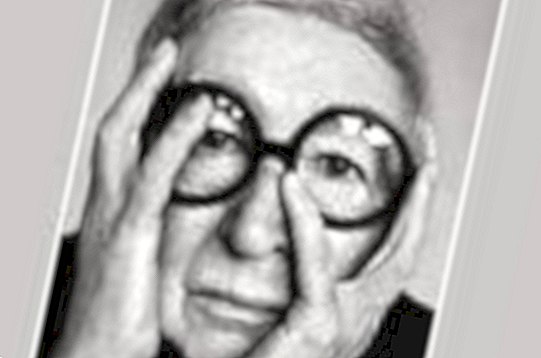Freedom for things

"I never woke up in the morning with a brilliant idea," says Gae Aulenti. "I have to study my 'subject' from the ground up." Falling to the bottom, looking at it, refl ecting: It loves this process, which starts long before a design. Gae Aulenti wants to get to the bottom of things, understand their inner logic - and make them visible with their designs. "If I were to be commissioned tomorrow to design an airport," she says, "I would probably soon become an expert in aviation history." She is already an expert on theater, light and modern art.
It all started with a revolt. "My parents wanted me to be a dilettante but nice girl in society," says Gae Aulenti, "but I've rebelled." For a lifetime. The great old lady of Italian architecture abounds with assertiveness and ideas. She is one who has worked her way through, removing obstacles and tearing down walls. One that acted smartly against the overwhelming male competition in architectural firms and design studios - and with wit. Nevertheless, Gae Aulenti has never been a feminist. A free spirit already rather.
Gae Aulenti has always had her own mind
Women should not always consider themselves a minority, she once said, "that paralyzes thinking". She always had her own head. Dickkopf, her father, a merchant from Udine, would have said so. Against his will, Gae Aulenti enrolled in architecture studies at the Polytechnic College in Milan. At the age of 20 she graduated as one of two women. At "Casabella Continuità", the leading magazine for architecture and design in Italy in the 50s and 60s, she became first editor and later art director. "We had endless discussions about the future of Italian architecture," recalls Gae Aulenti. It was nothing less than the emancipation from the Bauhaus, but also Mussolini's fascist architecture. It was about the philosophy of design and visionary design. "We wanted to find our own identity," she says. The little woman with the short-cut thick gray hair and the melodious grater voice appreciates independence - especially in her thinking.
But sometime in the mid-1960s Gae Aulenti had had enough of mere theory. She wanted to design. Milan was then the international design metropolis, a melting pot of architects and designers from all over the world. And Gae Aulenti the queen of the avant-garde. She was her mastermind. Trendy design companies such as Zanotta, Kartell and Poltronova took care of their designs, which were mostly simple, but always with a wink.
The designs by Gae Aulenti are current - and timeless
When designing a mobile coffee table for Fontana Arte, she simply mounted a glass plate on four huge wheels. Her lights - especially the "Pipistrello", which is more like a sculpture than a lamp - have long been coveted design classics. Gae Aulenti does not like style. She likes the word "stillos" in its very own meaning much better. "I'm not post, not neo, not modern, I'm contemporary, period." Their designs are certainly never fashionable. They appeal to people's need for harmony, "a longing that may just be a utopia," she says thoughtfully.
Her office in Piazza San Marco, Milan, is a place of inspiration, filled to the brim with books on art history, painting, music, literature. In the same house Verdi also wrote his famous Requiem. "Culture is the food for my intuition," she says. No wonder, then, that designing stage sets for Europe's major opera houses was one of her favorite assignments, for Alban Berg's "Wozzeck" at La Scala, for example, or Rossini's "Il Viaggio a Reims" at the Vienna State Opera.
In the 70s and 80s Gae Aulenti made a name for herself as an architect. She became one of the best. One that dominates especially the handling of historic buildings. In 1980 she won the contract for the redevelopment of the Paris Gare d'Orsay station into a museum of 19th century art. Soon followed other spectacular projects: the redesign of the Museum of Modern Art at the Paris Center Pompidou, for example, and the Palazzo Grassi in Venice - and, of course, the rebuilding of the Gran Teatro La Fenice in Venice after the fire of 1996. Currently she is working on a design for a Milanese library. "That my head is working so well is because I have so much to do," says Aulenti, who still works daily in her studio in Milan. "That does not stop at the age of 81, nor does the dreaming." For example, about designing a city again. "Well," she says then, "it may be a little too."










